Naha is the vibrant capital city of Okinawa Prefecture, a subtropical paradise located in the southernmost part of Japan.
With its rich cultural heritage, stunning landscapes, and bustling urban center, Naha offers a captivating blend of tradition and modernity that appeals to residents and visitors alike. Let’s delve into an introduction to this captivating city:
Historical Significance: Naha boasts a deep historical significance, acting as the political, economic, and cultural hub of the Okinawa islands.
The city’s history is intertwined with the Ryukyu Kingdom, an independent kingdom that once flourished here and engaged in maritime trade with neighboring countries.
Modern Urban Hub: Today, Naha is a thriving modern city that showcases a harmonious blend of traditional Okinawan culture and contemporary developments.
Its bustling streets are lined with shopping districts, restaurants, cafes, and a diverse range of entertainment options.
Cultural Heritage: Naha’s cultural heritage is vividly showcased through its architecture, historic sites, and festivals. Shuri Castle, a UNESCO World Heritage Site, stands as a symbol of the Ryukyu Kingdom’s former grandeur. The city is also home to numerous shrines, temples, and traditional houses that reflect its unique cultural identity.
Local Cuisine: Naha’s culinary scene is a highlight, offering a delectable array of dishes that incorporate fresh seafood, tropical fruits, and unique ingredients.
Don’t miss the chance to savor Okinawan specialties such as Okinawan soba, Rafute (braised pork belly), and Goya Champuru (bitter melon stir-fry).
Shopping and Entertainment: The city caters to shopping enthusiasts with its diverse range of shopping districts. Kokusai Street, one of Naha’s main thoroughfares, is lined with souvenir shops, boutiques, and restaurants. Additionally, the city offers a mix of cultural performances, live music, and nightlife options.
Natural Beauty: Naha’s natural surroundings are breathtaking. The turquoise waters of the East China Sea, scenic coastlines, and lush parks contribute to a tranquil and picturesque environment. Nearby islands and beaches offer opportunities for water sports, relaxation, and exploration.
Transportation Hub: Naha is well-connected by transportation options such as the Yui Rail monorail, buses, and taxis, making it easy to explore the city and its surroundings.
Its proximity to Naha Airport ensures convenient access for travelers arriving from both domestic and international destinations.
Warm Hospitality: The people of Naha are known for their warm and welcoming hospitality, creating a friendly and inviting atmosphere for visitors.
The city’s residents take pride in sharing their local culture and traditions with those who come to experience Naha’s unique charm.
From its historical treasures to its contemporary attractions, Naha encapsulates the essence of Okinawan culture while embracing the opportunities of the modern world.
Whether you’re interested in exploring ancient sites, savoring local flavors, or soaking in the natural beauty, Naha promises a memorable and enriching experience for every traveler.
1. Shuri Castle: Explore this UNESCO World Heritage Site and experience the historical significance of Okinawa’s royal past
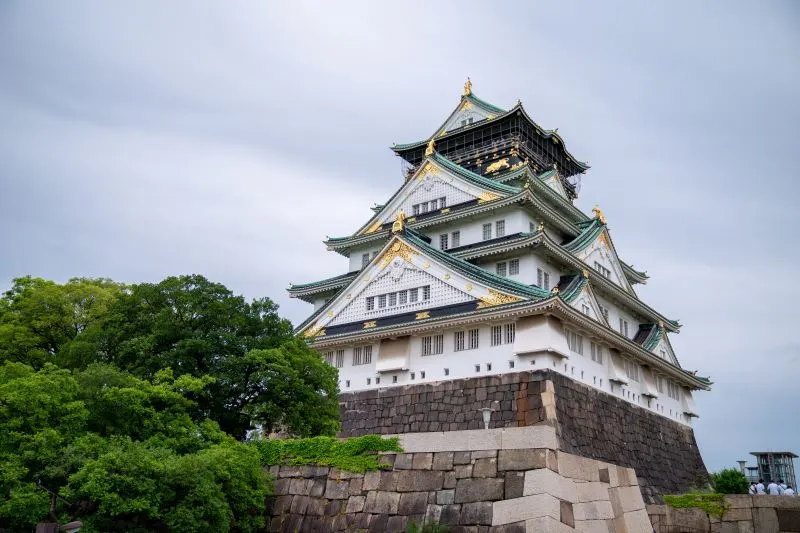
Shuri Castle is a historic and cultural landmark located in Naha, Okinawa, Japan. It served as the royal palace of the Ryukyu Kingdom, which ruled over the Okinawa Islands from the 15th to the 19th century.
The castle complex is known for its distinctive architecture, characterized by a unique blend of Chinese and Okinawan design elements.
The main buildings of Shuri Castle were reconstructed over the years, as the original structures were damaged or destroyed during various conflicts, including World War II.
The reconstruction work aimed to restore the castle to its former glory, and it has been designated as a UNESCO World Heritage Site.
Visitors to Shuri Castle can explore the beautifully landscaped grounds, traditional buildings, and ornate decorations that provide insight into the Ryukyuan culture and history.
The architecture reflects the kingdom’s status as a cultural crossroads, with influences from China, Japan, and other neighboring regions.
The castle offers a glimpse into the royal life of the Ryukyu monarchs, and the complex includes various structures like gates, courtyards, shrines, and living quarters.
The vibrant red color of the buildings and the intricate detailing on roofs and facades make Shuri Castle a visually captivating attraction.
2. Kokusai Street: Stroll along this bustling street filled with shops, restaurants, and local vendors, perfect for shopping and trying Okinawan cuisine
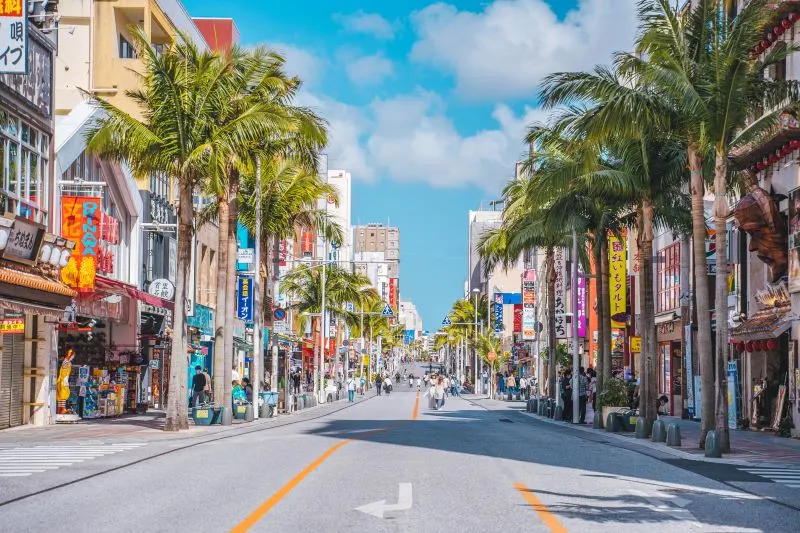
Kokusai Street stretches for about 1.6 kilometers (1 mile) through the heart of Naha and serves as a hub of activity, commerce, and cultural exchange.
The street is known for its energetic atmosphere, lined with an array of shops, boutiques, restaurants, cafés, souvenir stores, and local vendors.
Key features of Kokusai Street include:
Shopping: The street offers a diverse range of shopping opportunities, from modern fashion boutiques to traditional craft shops. Visitors can find clothing, accessories, handicrafts, ceramics, textiles, and more.
Dining: Kokusai Street is a paradise for food enthusiasts. Numerous restaurants, food stalls, and cafés offer a variety of Okinawan cuisine as well as international options. It’s a great place to try local specialties like Okinawa soba, goya champuru, and tropical fruits.
Local Culture: The street provides a glimpse into Okinawan culture through its traditional architecture, street performances, and the presence of local musicians and artisans. It’s a lively place to experience the island’s unique identity.
Events: Kokusai Street often hosts special events and festivals throughout the year, celebrating cultural traditions, arts, and local products.
Nightlife: As evening approaches, the street transforms into a hub of nightlife with bars, pubs, and entertainment venues. It’s a great place to unwind after a day of exploration.
Souvenirs: The street is an excellent spot to purchase souvenirs and gifts, including traditional crafts, textiles, and Okinawan sweets.
Pedestrian-Friendly: Kokusai Street is predominantly a pedestrian zone, making it easy and enjoyable to explore on foot.
3. Tamaudun Mausoleum: Visit this royal mausoleum complex to learn about the Ryukyuan dynasty and its history
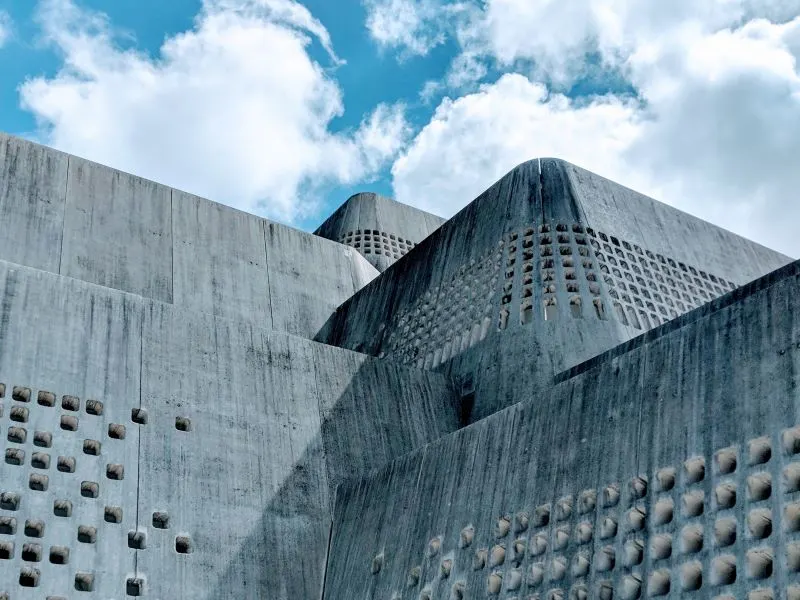
Tamaudun is a historic mausoleum located in Naha, the capital city of Okinawa Prefecture in Japan. It is known for its significance in Okinawan history and architecture.
The Tamaudun Mausoleum was constructed during the early 16th century and was designated as a UNESCO World Heritage Site as part of the larger “Gusuku Sites and Related Properties of the Kingdom of Ryukyu” in 2000.
The mausoleum was built as a royal tomb for the Ryukyuan kings and queens of the Second Sho Dynasty. It reflects the architectural style of the region, which is a blend of indigenous Okinawan design and influences from Chinese and Japanese architecture. The structure features distinctive red-tiled roofs and white walls, surrounded by a beautiful garden.
Inside Tamaudun, there are three separate chambers where the remains of royal family members were interred. The central chamber contains the tombs of the main kings and queens, while the side chambers hold the remains of other members of the royal family.
The mausoleum’s design and layout reflect the social hierarchy and traditions of the Ryukyu Kingdom.
4. Naminoue Shrine: This picturesque shrine offers beautiful ocean views and a serene atmosphere
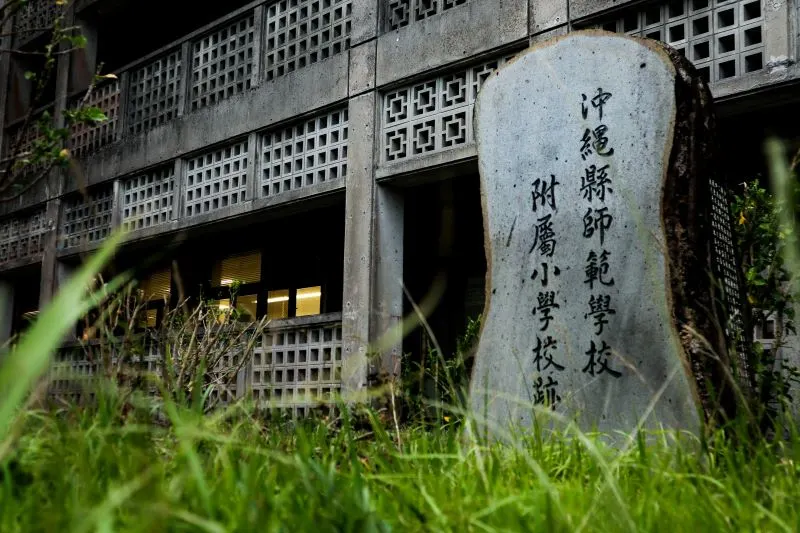
Naminoue Shrine is a prominent Shinto shrine located in Naha, the capital city of Okinawa Prefecture in Japan. Its name, “Naminoue,” translates to “Above the Waves,” which is fitting as the shrine is situated on a cliff overlooking the ocean. The shrine is known for its picturesque location, spiritual significance, and historical importance.
One of the distinctive features of Naminoue Shrine is its striking red torii gate, which stands at the entrance and marks the transition from the secular world to the sacred space of the shrine. The shrine’s main hall, surrounded by lush greenery, offers visitors a tranquil atmosphere for prayer and reflection.
Naminoue Shrine is revered by the local Okinawan community and visitors alike as a place to offer prayers for various aspects of life, including safe travels, good fortune, and the well-being of family and friends.
It also plays a role in local festivals and cultural events, making it an important hub for the community’s spiritual and social life.
The shrine’s connection to the ocean and its strategic location along the coast have historical significance as well, as it was believed to protect sailors and fishermen from the dangers of the sea.
Over the years, Naminoue Shrine has become a symbol of Okinawan spirituality, culture, and resilience, making it a popular destination for both religious observance and tourism.
5. Makishi Public Market: Experience the local culture by exploring this vibrant market offering fresh seafood, produce, and traditional foods
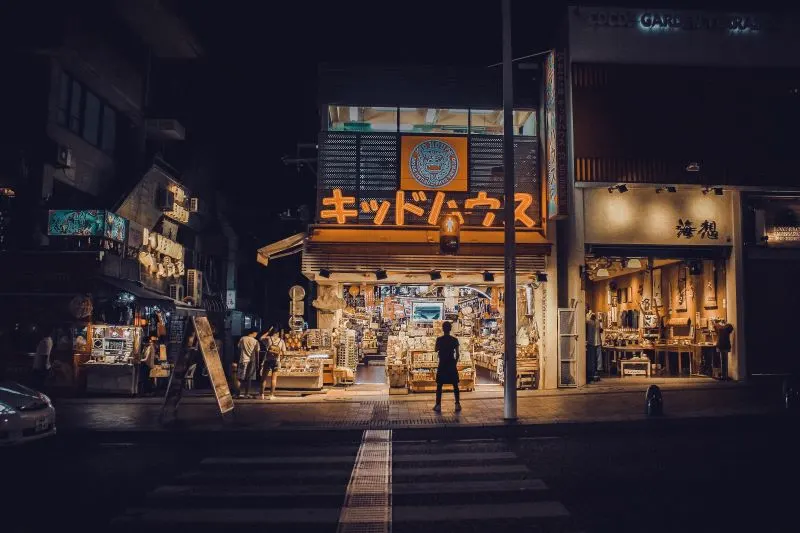
Makishi Public Market, also known as “Makishi Kosetsu Ichiba” in Japanese, is a bustling and vibrant market located in Naha, the capital city of Okinawa Prefecture, Japan.
The market is a popular destination for locals and tourists alike, offering a wide variety of fresh seafood, produce, local foods, and unique cultural experiences.
The market is characterized by its lively atmosphere and traditional Okinawan architecture. It consists of several interconnected buildings and narrow alleyways filled with stalls and vendors selling a diverse range of goods.
One of the highlights of the Makishi Public Market is its extensive selection of seafood, including fish, shellfish, and Okinawan delicacies like mozuku seaweed.
Visitors to the market can enjoy not only shopping for ingredients but also sampling a variety of ready-to-eat foods. Some stalls offer traditional Okinawan dishes such as sashimi, tempura, and goya champuru (stir-fried bitter melon with pork and tofu). The market is a great place to experience the local cuisine and immerse yourself in Okinawan flavors.
In addition to the culinary offerings, the market also features vendors selling traditional crafts, souvenirs, clothing, and household items.
It’s a vibrant hub where locals and visitors can interact, learn about Okinawan culture, and enjoy the sights, sounds, and tastes of the region.
6. Okinawa Prefectural Museum & Art Museum: Learn about Okinawa’s rich history, culture, and art through fascinating exhibits
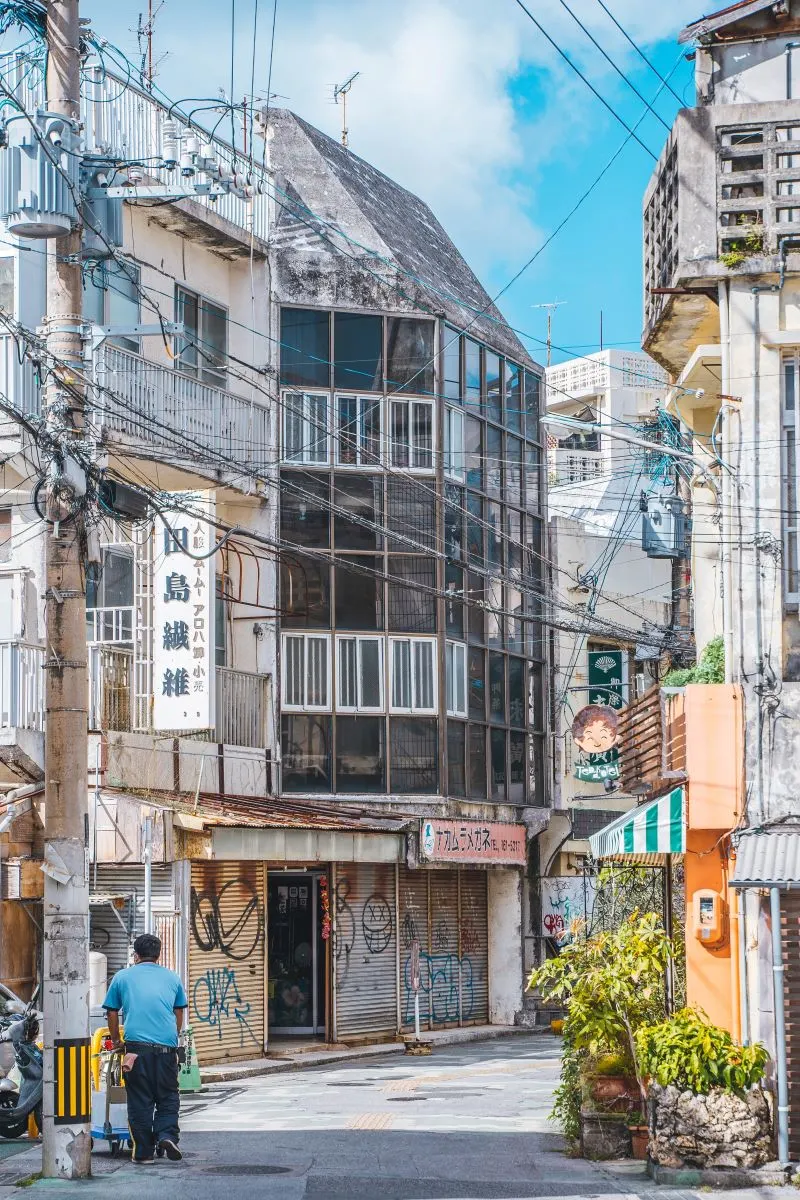
The Okinawa Prefectural Museum & Art Museum, often referred to simply as the Okinawa Prefectural Museum, is a comprehensive cultural institution located in Naha, Okinawa Prefecture, Japan. It aims to showcase and preserve the diverse history, culture, art, and natural heritage of the Okinawan islands.
The museum is divided into two main sections: the Okinawa Prefectural Museum and the Okinawa Prefectural Art Museum.
Okinawa Prefectural Museum: This section of the institution is dedicated to the preservation and presentation of Okinawa’s historical and cultural heritage.
It features a variety of exhibits that cover a wide range of topics, including Okinawan history, traditional crafts, folklore, archaeology, and the natural environment.
Visitors can learn about the unique Ryukyuan culture, the island’s connection to trade and maritime routes, and the impact of historical events on the region.
Okinawa Prefectural Art Museum: This section focuses on showcasing artworks by local and international artists. It features a diverse collection of contemporary and traditional art, including paintings, sculptures, ceramics, and more.
The museum often hosts rotating exhibitions that highlight different artistic perspectives, genres, and cultural expressions.
The Okinawa Prefectural Museum & Art Museum serves as an educational and cultural hub for both residents and visitors. Through its exhibitions and programs, it aims to foster an understanding of Okinawa’s rich history, vibrant culture, and artistic contributions.
The institution provides insights into the region’s past while also celebrating its present artistic achievements, making it an important cultural destination in Okinawa.
7. Okinawa World: Discover the Gyokusendo Cave and the Habu Snake Museum at this cultural theme park
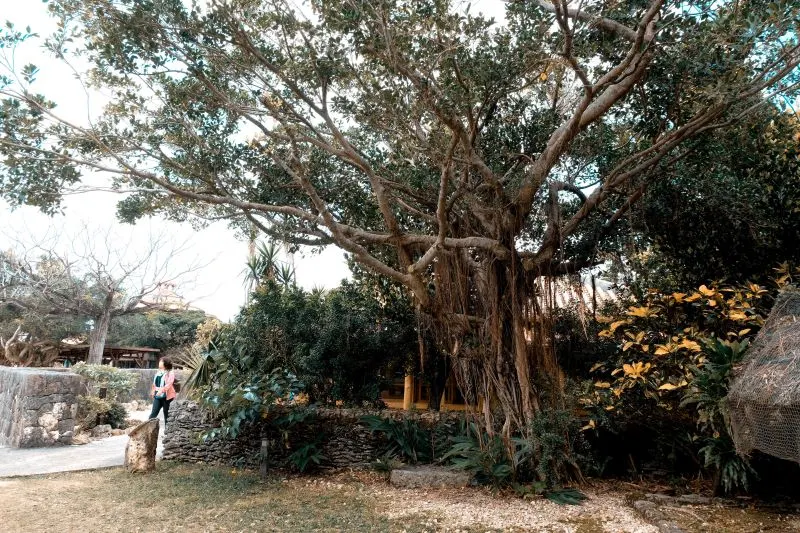
Okinawa World is a cultural theme park located in Nanjo, Okinawa Prefecture, Japan. It offers visitors a unique opportunity to explore various aspects of Okinawan culture, history, and natural wonders. The park is known for two main attractions: the Gyokusendo Cave and the Habu Snake Museum.
Gyokusendo Cave: Gyokusendo Cave is a stunning limestone cave complex that stretches for about 5 kilometers underground.
Visitors can take a guided tour through a portion of the cave to witness its incredible rock formations, stalactites, and stalagmites.
The cave’s natural beauty is illuminated with carefully placed lighting, creating a mesmerizing and otherworldly atmosphere.
The cave’s formations have been shaped over millions of years, making it a geological wonder and a must-see attraction for those interested in natural phenomena.
Habu Snake Museum: The Habu Snake Museum within Okinawa World is dedicated to educating visitors about the habu snake, a venomous pit viper species native to Okinawa.
Visitors can learn about the habits, behavior, and significance of these snakes in Okinawan culture. The museum also provides insights into the traditional methods of using habu venom for medicinal purposes. Live demonstrations showcase how trained professionals handle and extract venom from these snakes.
In addition to these main attractions, Okinawa World offers various cultural experiences and activities. Visitors can enjoy traditional Eisa dance performances, explore a recreated Okinawan village showcasing historical architecture and crafts, and try their hand at making local crafts and pottery. The park also features shops selling Okinawan souvenirs, snacks, and traditional products.
8. Peace Memorial Park: Pay your respects at this monument to honor the lives lost during the Battle of Okinawa
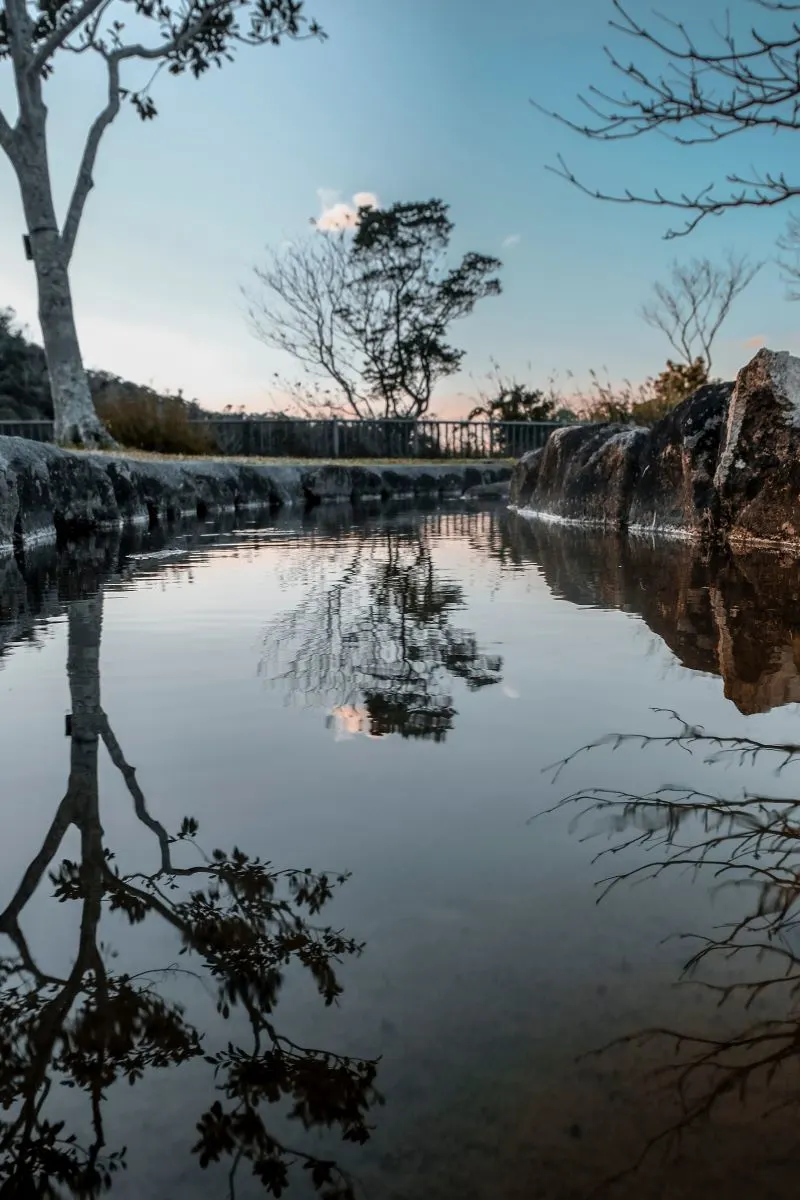
Peace Memorial Park is a poignant and solemn site located in Naha, Okinawa, Japan. It serves as a heartfelt tribute to the lives tragically lost during the Battle of Okinawa, a significant conflict that occurred during World War II.
The park’s primary purpose is to honor the memory of those who perished during the battle and to promote a message of peace and reconciliation.
The park encompasses various elements that evoke reflection and remembrance. Central to its design is the Peace Memorial Hall, where visitors can learn about the history of the Battle of Okinawa through exhibits, photographs, and personal stories.
The centerpiece of the park is the Okinawa Prefectural Peace Memorial Museum, which offers further insights into the events of the battle and their lasting impact.
A striking feature of the park is the Peace Memorial Monument, a towering structure that symbolizes a desire for global harmony and the prevention of future conflicts.
The serene and contemplative atmosphere is enhanced by beautifully landscaped gardens, serene ponds, and sculptures that evoke the themes of peace and resilience.
Visitors are encouraged to pay their respects at the various memorials and monuments scattered throughout the park.
These include the Cornerstone of Peace, which bears the names of all those who lost their lives, as well as various statues and plaques that convey messages of hope and unity.
9. Himeyuri Peace Museum: Gain insight into the stories of young women who worked as nurses during World War II
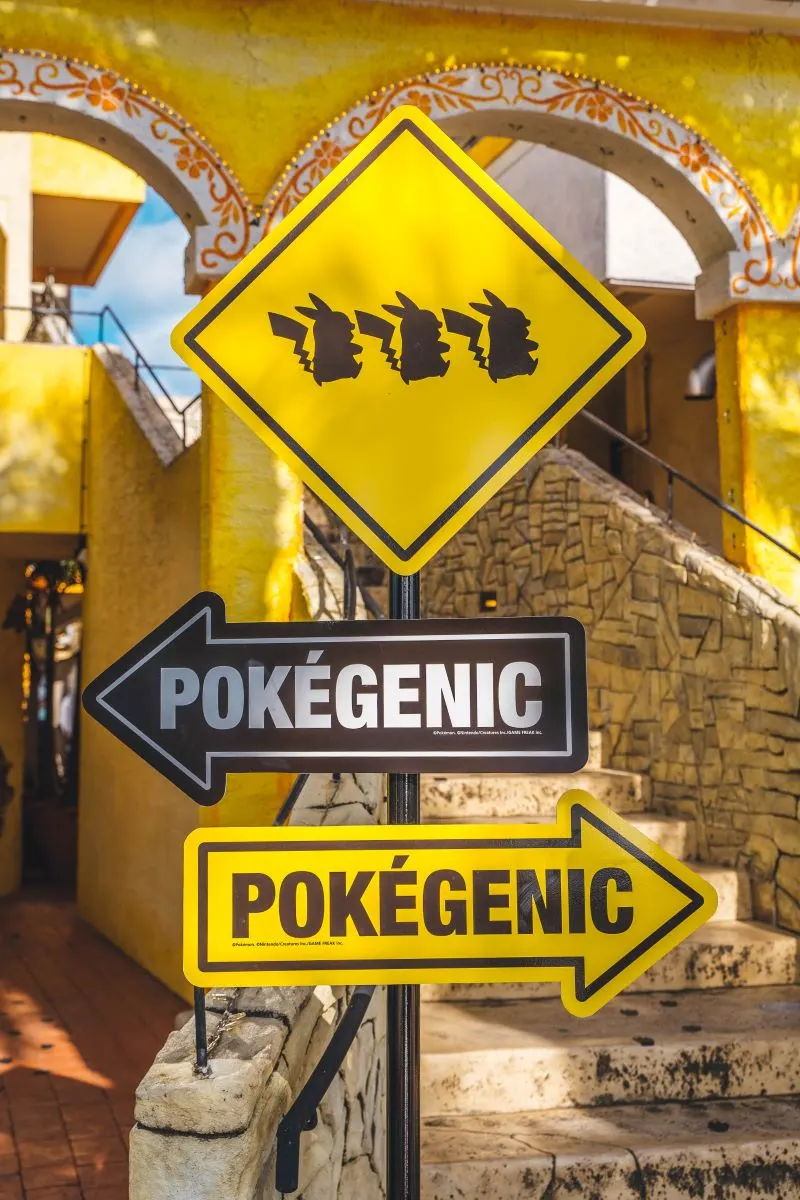
The Himeyuri Peace Museum is a significant historical site located in Okinawa, Japan. It is dedicated to preserving the memory of the Himeyuri Students, a group of young Okinawan girls who were mobilized as nurses and support staff during the Battle of Okinawa in World War II.
The museum’s main objective is to honor the bravery and sacrifices of these young girls while promoting the message of peace and the prevention of further conflicts.
The museum features a comprehensive collection of artifacts, photographs, and personal testimonies that provide insight into the experiences of the Himeyuri Students during the battle.
Visitors can learn about the challenges they faced, their efforts to care for the wounded, and the impact of the battle on their lives.
One of the most moving parts of the museum is the underground tunnel display, which replicates the underground shelter where the Himeyuri Students took refuge during the battle. The tunnel houses exhibits that portray the harsh realities of war and the resilience of those who endured it.
Throughout the museum, there are interactive displays, dioramas, and multimedia presentations that engage visitors and convey the emotional and historical significance of the Himeyuri Students’ story.
The museum aims not only to educate visitors about this lesser-known aspect of World War II history but also to inspire reflection on the importance of peace and the human cost of conflict.
10. Heiwa Dori Shopping Street: Shop for souvenirs, clothing, and accessories in this covered shopping arcade
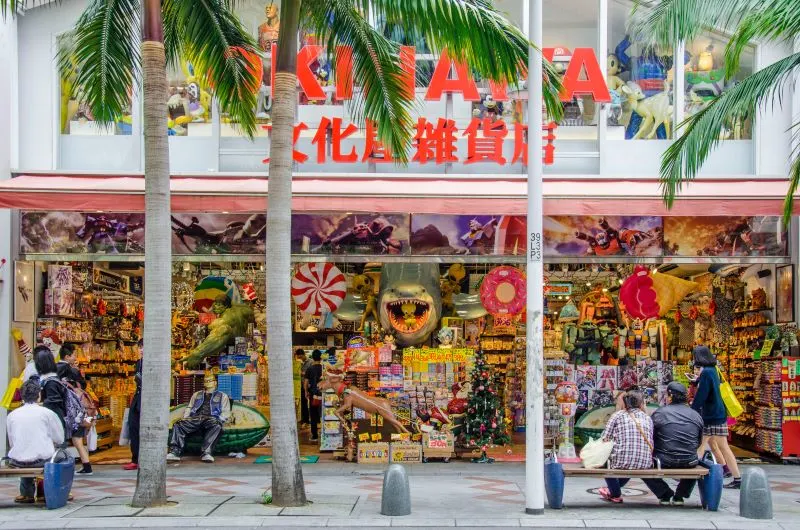
Heiwa Dori Shopping Street, located in Naha, Okinawa, is a bustling and vibrant pedestrian shopping avenue known for its unique blend of local culture, traditional crafts, and modern shopping experiences.
“Heiwa Dori” translates to “Peace Street,” reflecting the desire for peace and prosperity in the wake of the Battle of Okinawa during World War II.
The street offers a wide array of shops, boutiques, stalls, and vendors selling a diverse range of goods, from traditional Okinawan crafts and souvenirs to contemporary fashion, accessories, and local snacks.
Visitors can explore an assortment of products, including textiles, pottery, jewelry, and unique Okinawan handicrafts that reflect the island’s distinct cultural heritage.
Heiwa Dori Shopping Street also provides a glimpse into Okinawa’s culinary scene. Numerous food stalls and restaurants line the street, offering both local Okinawan dishes and international cuisine.
It’s a great place to sample traditional dishes like Okinawan soba (noodles), sata andagi (fried doughnuts), and other regional specialties.
The street’s lively and colorful atmosphere, along with its mix of traditional and modern shopping options, makes it a popular destination for both tourists and locals alike.
Whether you’re looking for authentic souvenirs, a taste of local cuisine, or a leisurely stroll through a bustling market, Heiwa Dori Shopping Street offers a memorable and vibrant shopping experience in the heart of Naha, Okinawa.
11. Cape Manzamo: Enjoy breathtaking views of the ocean and cliffs from this natural landmark
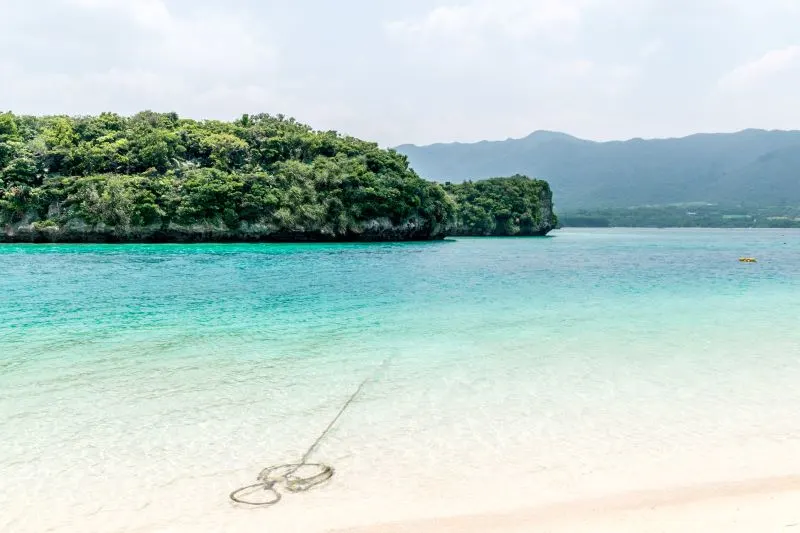 v
v
Cape Manzamo is a picturesque and iconic natural landmark located in Onna Village on Okinawa Island, Japan. It is known for its breathtaking coastal views, dramatic limestone cliffs, and crystal-clear turquoise waters.
Cape Manzamo holds cultural and geological significance, making it a popular destination for both tourists and locals.
The cape’s most distinctive feature is the Manzamo Rock, a massive flat-topped limestone formation that juts out from the coastline.
This rock offers a panoramic vantage point from which visitors can take in the expansive views of the East China Sea, the rugged coastline, and the surrounding landscape.
Visitors often come to Cape Manzamo to enjoy its stunning sunset views, making it a popular spot for photography and relaxation.
The area is also surrounded by walking paths and observation points, allowing visitors to explore the natural beauty of the region at their own pace.
Cape Manzamo is not only appreciated for its natural beauty but also for its historical and cultural significance. According to local legend, the name “Manzamo” is derived from the Okinawan dialect words “man,” meaning 10,000, and “zamo,” meaning seat. The name is said to reflect the idea that countless gods would gather at this place.
12. Fukushuen Garden: Relax in this beautifully landscaped Chinese garden with traditional architecture
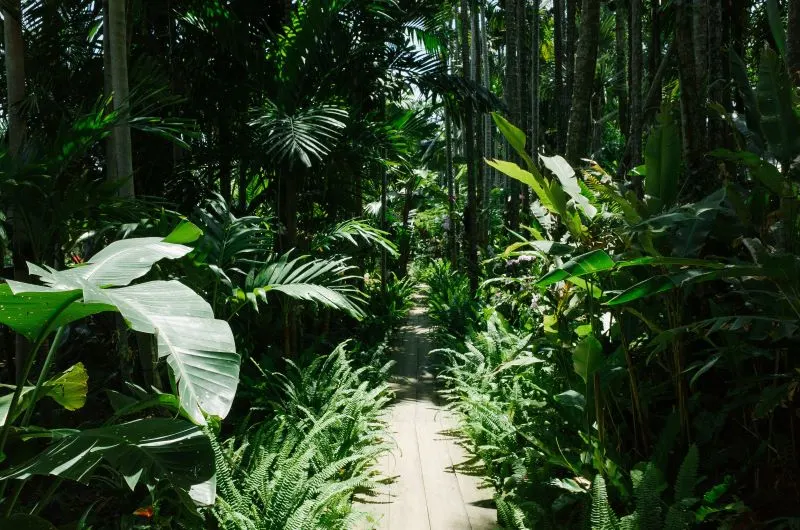
Fukushūen Garden, also known as “Fukushu-en” or the “Chinese Garden,” is a tranquil and beautifully landscaped garden located in Naha, Okinawa, Japan.
It is a serene oasis that reflects traditional Chinese gardening aesthetics and provides a peaceful escape from the hustle and bustle of the city.
The garden was established as a symbol of friendship between Naha and Fuzhou, a city in China’s Fujian Province. Its design draws inspiration from classical Chinese garden styles, featuring elements such as flowing water, pavilions, stone bridges, and meticulously manicured plants.
Visitors to Fukushūen Garden can expect to find a variety of traditional Chinese garden features, including koi-filled ponds, meandering pathways, lush greenery, and intricately designed pavilions and bridges. These elements work harmoniously to create a serene environment that encourages contemplation and relaxation.
One of the garden’s notable features is the red-painted Chinese-style arched bridge, which adds a vibrant contrast to the surrounding greenery. There are also various sculptures and ornamental rocks that enhance the garden’s aesthetic appeal.
Fukushūen Garden provides a unique opportunity to experience a piece of Chinese culture and design within the vibrant city of Naha.
It’s a place to enjoy a leisurely stroll, appreciate the carefully curated landscape, and find a sense of tranquility amid the urban surroundings.
13. Shikinaen Royal Garden: Admire the stunning garden and palace that served as a summer retreat for the Ryukyu royal family
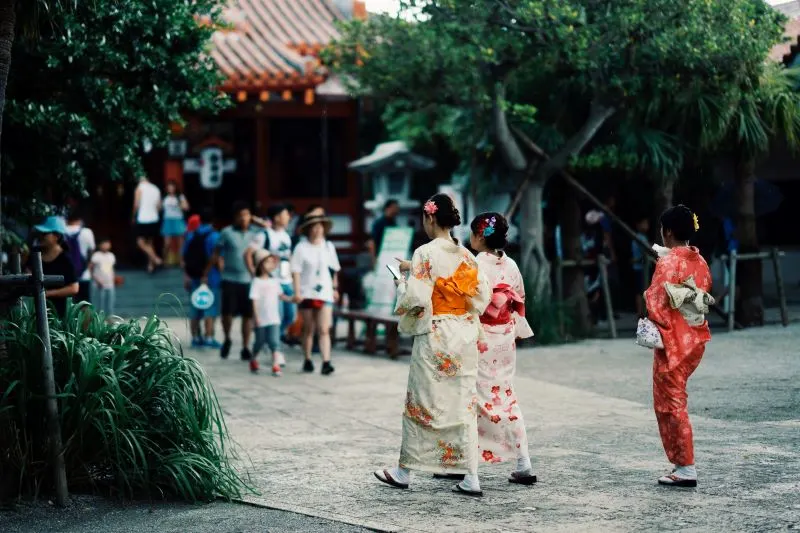
Shikinaen Royal Garden, often simply referred to as Shikinaen Garden, is a historic and exquisitely landscaped garden located in Naha, Okinawa, Japan.
This garden holds historical significance as it was once a retreat and residence for the Ryukyuan royalty during the time of the Ryukyu Kingdom.
The garden’s design blends both traditional Okinawan elements with influences from Chinese and Japanese gardening styles. It features a central pond surrounded by lush greenery, walking paths, ornate bridges, and carefully positioned pavilions and buildings.
One of the highlights of Shikinaen Garden is the Seiden-no-Ma, a majestic two-story wooden palace that served as a reception hall for the Ryukyuan kings when hosting foreign dignitaries.
The palace is notable for its distinctive red roof and elegant architecture that fuses Okinawan, Chinese, and Japanese design elements.
The garden itself is meticulously landscaped, with a variety of trees, shrubs, and plants that create a harmonious and serene environment.
Visitors can stroll along the winding pathways, cross charming stone bridges, and take in the picturesque views of the pond and surrounding foliage.
Shikinaen Royal Garden offers a glimpse into the historical and cultural heritage of the Ryukyu Kingdom. It’s a place to appreciate the artistry of traditional garden design, the significance of royal residences, and the natural beauty of Okinawa.
The garden has been designated as a UNESCO World Heritage site and stands as a testament to the rich history and cultural identity of the region.
14. Manko Waterbird and Wetland Center: Explore the unique ecosystem of this wetland area and spot various bird species
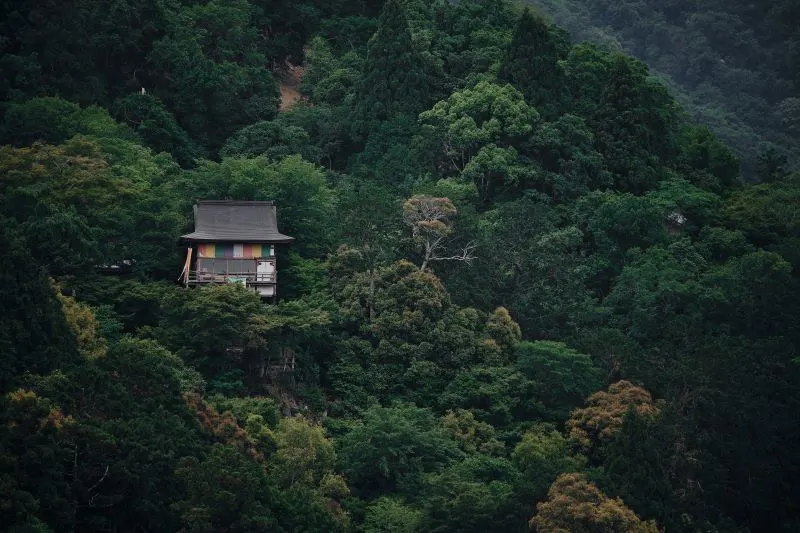
The Manko Waterbird and Wetland Center in Naha, Okinawa, offers an opportunity to immerse yourself in a distinctive natural ecosystem and observe a diverse array of bird species.
This center provides a gateway to the wetland area, allowing visitors to engage with the local environment and its inhabitants.
Located within a wetland habitat, the Manko Waterbird and Wetland Center offers an educational and enriching experience for nature enthusiasts and birdwatchers.
The wetland environment is known for its rich biodiversity, and it attracts various species of birds that thrive in this unique ecosystem.
Visitors can explore well-maintained trails and observation points that offer optimal views of the wetland and its inhabitants.
Whether you’re a seasoned birdwatcher or simply curious about the avian diversity in the area, you can expect to spot a range of bird species, including waterbirds, shorebirds, and potentially some migratory species depending on the time of year.
The center may also provide educational exhibits and information about the importance of wetland conservation and its role in supporting local ecosystems.
Additionally, guided tours or interpretive materials might enhance your understanding of the surroundings and the bird species you encounter.
15. Okinawa Soba: Try the local specialty, Okinawa soba, at various restaurants throughout the city
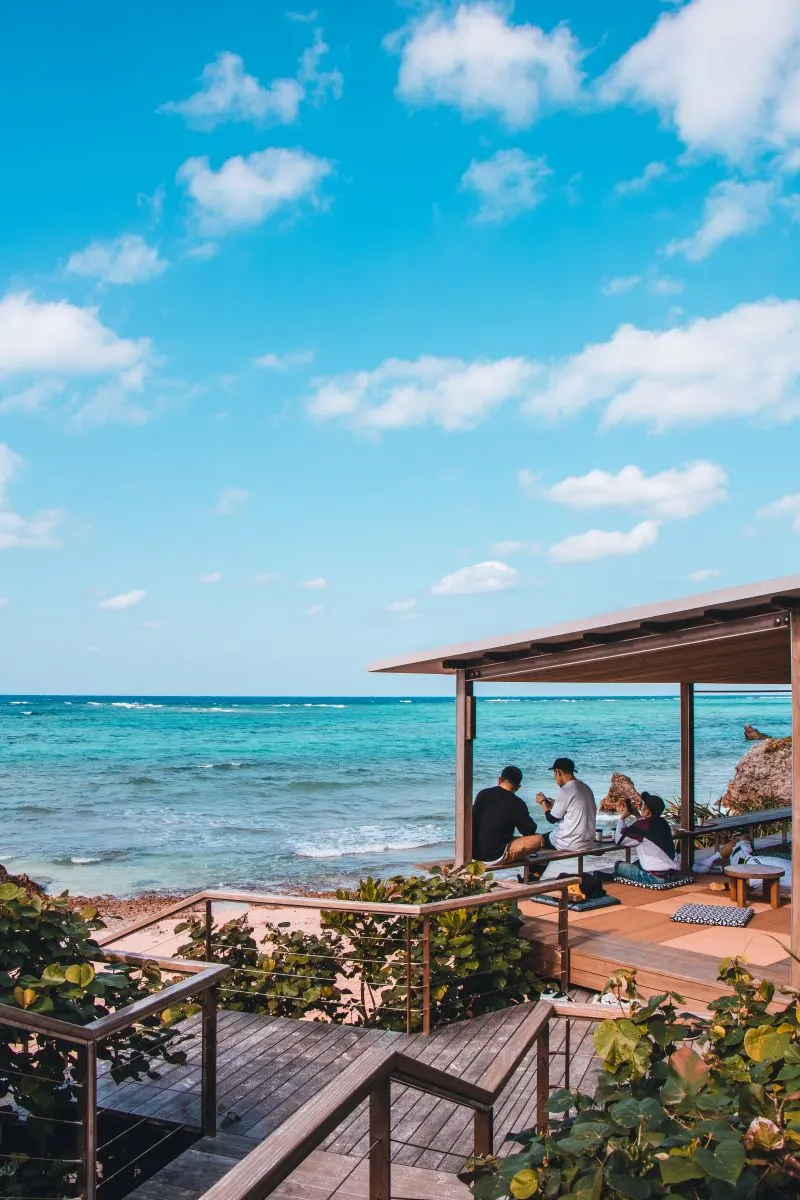
Okinawa Soba is a traditional and beloved noodle dish originating from the Okinawa Prefecture of Japan. Despite its name, Okinawa Soba is not made from buckwheat like the soba noodles commonly found in mainland Japan. Instead, it features wheat-based noodles that are thicker and chewier in texture.
The dish is characterized by its flavorful broth, which is typically made from a combination of pork bones, bonito flakes, and kelp.
The broth is simmered for hours to develop a rich and savory flavor. The noodles are then cooked separately and added to the bowl, along with a variety of toppings and condiments that enhance the taste and visual appeal of the dish.
Common toppings for Okinawa Soba include slices of tender simmered pork belly, green onions, kamaboko (fish cake), and beni shoga (pickled red ginger). Some variations might include additional ingredients such as seaweed, shredded bonito, or even a boiled egg.
One of the distinctive elements of Okinawa Soba is the use of sanmainiku, a type of pork belly that is typically stewed until tender. This tender pork adds a rich and indulgent element to the dish.
16. Ryukyu Mura: Experience traditional Okinawan culture through demonstrations, workshops, and performances
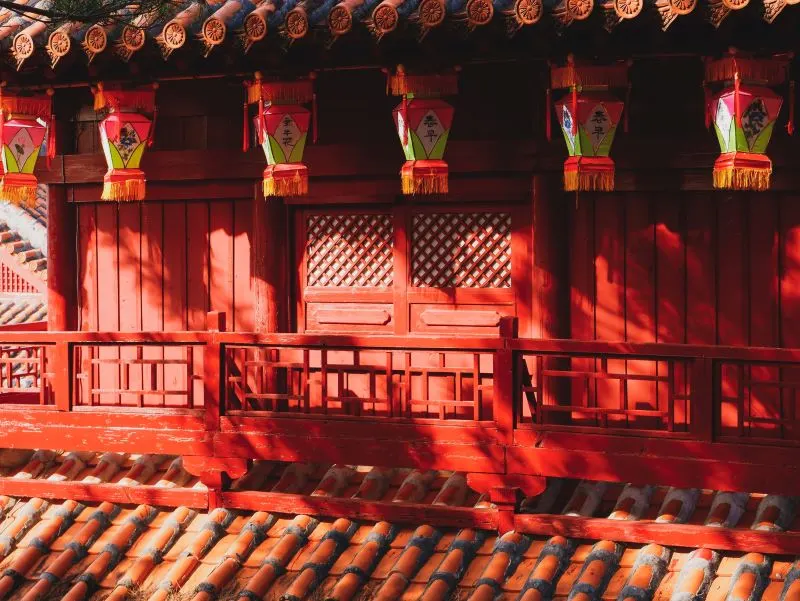
Ryukyu Mura is a cultural theme park located in the city of Naha on Okinawa Island, Japan. It aims to preserve and showcase the traditional culture and heritage of the Ryukyu Islands, which is the historical name for the Okinawa region.
At Ryukyu Mura, visitors can experience and learn about various aspects of Okinawan culture, including traditional crafts, music, dance, architecture, and cuisine.
The park often hosts live performances and demonstrations of local arts and crafts, such as pottery, weaving, and glassblowing. There are also workshops where visitors can participate in activities like making traditional Okinawan textiles or crafts.
The park typically features replica traditional houses and structures representing various periods in Okinawan history, allowing visitors to explore and gain insights into the architecture and lifestyle of the past.
Additionally, Ryukyu Mura has shops and stalls selling local products, snacks, and souvenirs, providing an opportunity for visitors to take home a piece of Okinawan culture.
17. Tomari Iyumachi Fish Market: Discover fresh seafood and local delicacies at this market by the harbor
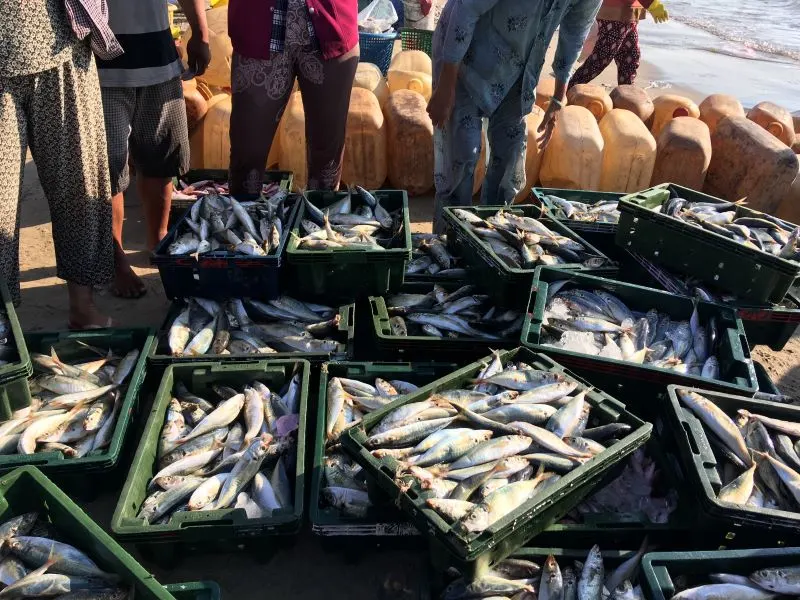
Tomari Iyumachi Fish Market is a popular seafood market located in Naha, the capital city of Okinawa Prefecture in Japan. The market is known for offering a wide variety of fresh seafood, including fish, shellfish, and other marine delicacies that are caught locally in the surrounding waters.
Visitors to Tomari Iyumachi Fish Market can experience the vibrant atmosphere of a traditional fish market while exploring stalls filled with an array of seafood products.
The market is often bustling with activity as fishermen and vendors display their catch of the day, showcasing the rich marine resources of the region.
It’s a great place to immerse yourself in the local seafood culture and sample some of the freshest seafood that Okinawa has to offer.
In addition to the seafood market, Tomari Iyumachi Fish Market typically has dining options where visitors can enjoy dishes made from the freshly caught seafood.
Many restaurants and eateries within the market serve up sashimi, sushi, tempura, and other seafood-based dishes, allowing visitors to indulge in the flavors of Okinawan cuisine.
18. Naha Great Tug-of-War Festival: If your visit coincides with this annual event, join in on one of the world’s largest tug-of-war battles
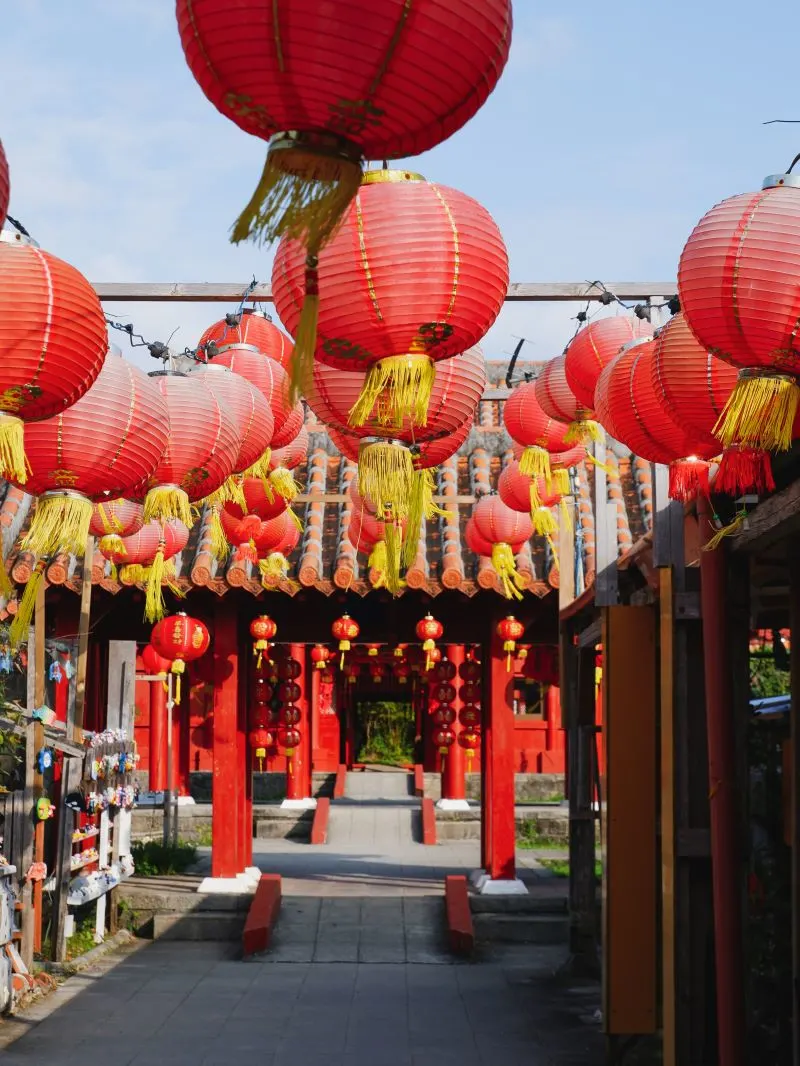
The Naha Great Tug-of-War Festival, also known as the Naha Tug-of-War Tournament, is a traditional event held annually in Naha, the capital city of Okinawa Prefecture, Japan. This festival is one of the largest and most well-known tug-of-war events in the world.
The Naha Tug-of-War Festival typically takes place in early October and is a celebration of Okinawan culture and tradition.
The centerpiece of the event is a massive tug-of-war rope that stretches through the city’s main street, Kokusai Street. The rope is incredibly long and heavy, often requiring the collective strength of thousands of participants to pull it.
The festival attracts both locals and tourists, and participants come together to tug on the rope in an intense display of teamwork and unity.
The festival is believed to bring good luck and prosperity to those who participate. The event often features traditional performances, music, dancing, and food stalls, adding to the festive atmosphere.
The Naha Great Tug-of-War Festival has a long history and cultural significance in Okinawa, and it is recognized as an important cultural heritage event by the Japanese government.
It serves as a way to promote community bonding, showcase traditional customs, and attract visitors from all around the world.
19. Tsushima-maru Memorial Museum: Learn about the tragic sinking of a ship carrying Okinawan schoolchildren during World War II
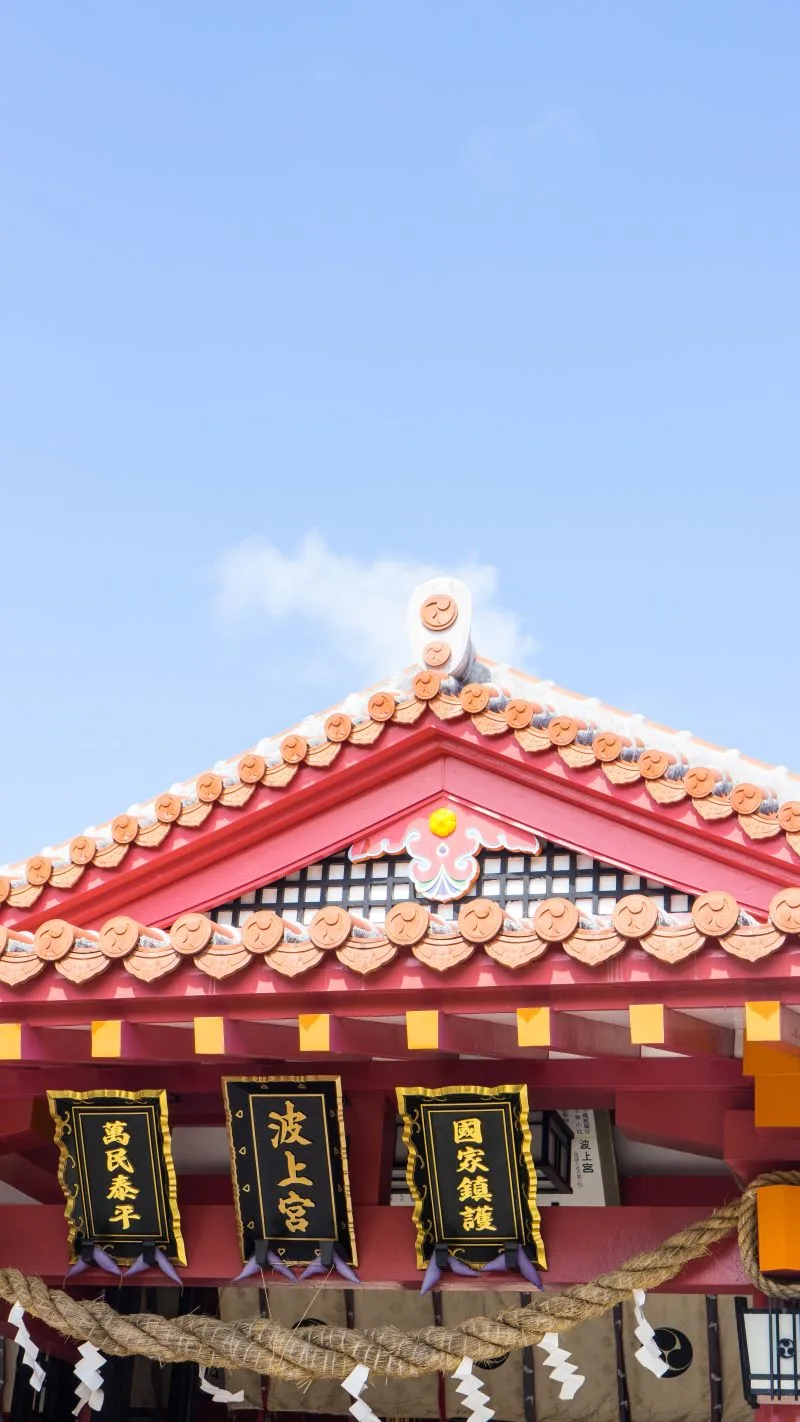
The Tsushima-maru Memorial Museum is a museum located in Naha, the capital city of Okinawa Prefecture, Japan. The museum is dedicated to preserving the memory of the tragic sinking of the Tsushima-maru, a ship that was carrying hundreds of schoolchildren and civilians during World War II.
The Tsushima-maru was a passenger-cargo ship that was requisitioned by the Japanese military for transporting evacuees, including schoolchildren and teachers, from Okinawa to mainland Japan in 1944.
Tragically, the ship was mistaken for an enemy vessel by a US submarine and was torpedoed, resulting in the loss of over 1,400 lives, including many children.
The Tsushima-maru Memorial Museum serves as a tribute to the victims of this devastating event. It houses exhibits and displays that provide historical context, recount the stories of the passengers on board, and honor the lives that were lost.
Visitors to the museum can learn about the events leading up to the sinking, the aftermath, and the impact on Okinawa’s history and society.
The museum also aims to promote peace, remembrance, and education about the human toll of war. It serves as a solemn reminder of the civilian casualties and the importance of preventing such tragedies in the future.
20. Naminoue Umisora Park: Relax in this coastal park offering green spaces and lovely ocean views
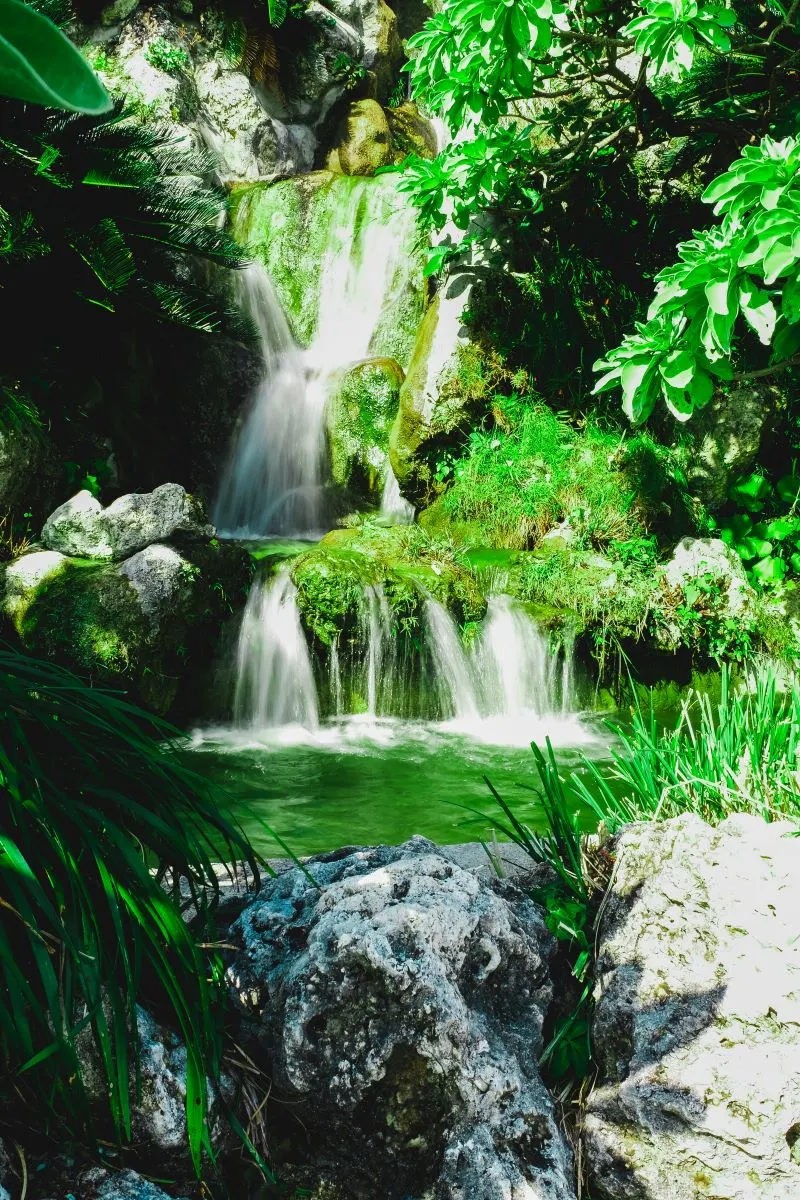
Naminoue Umisora Park is a scenic public park located in Naha, the capital city of Okinawa Prefecture, Japan. The park is situated on a hill overlooking the ocean, offering panoramic views of the coastline and the East China Sea.
“Naminoue” means “above the waves” in the Okinawan language, and the park’s name reflects its elevated position near the sea.
Naminoue Umisora Park is a popular destination for both locals and tourists, providing a peaceful and picturesque setting to relax and enjoy the natural beauty of the area.
The park features walking paths, green spaces, and observation points that allow visitors to take in the stunning vistas of the ocean, nearby islands, and the Naminoue Shrine, which is located at the base of the hill.
The Naminoue Shrine is a significant Shinto shrine in Okinawa and is known for its distinctive red torii gate that appears to emerge from the sea.
Visitors to Naminoue Umisora Park can also explore the park’s landscaped gardens, which often feature local plants and flowers.
The combination of natural scenery, cultural elements like the shrine, and the overall tranquil atmosphere makes the park a popular spot for relaxation, meditation, and photography.
21. Kinjo-cho Stone-Paved Path: Wander through the historic stone-paved streets of Kinjo-cho
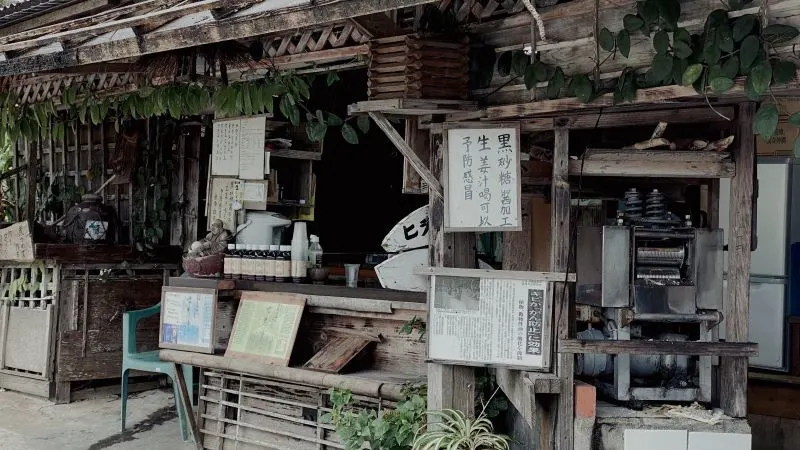
The Kinjo-cho Stone-Paved Path, also known as Kinjo Stone Road, is a historic stone-paved pathway located in Naha, the capital city of Okinawa Prefecture, Japan.
This path is known for its preservation of traditional Okinawan architecture and the unique ambiance it offers to visitors.
The Kinjo-cho Stone-Paved Path is a charming pedestrian route that winds through the old district of Kinjo-cho, showcasing the architectural and cultural heritage of the region.
The path is lined with traditional Okinawan-style houses, many of which have been preserved in their original state or converted into shops, galleries, cafes, and small businesses.
The stone-paved pathway itself is a highlight, providing a glimpse into the historical urban layout of Okinawa’s past. As you stroll along the path, you’ll encounter cobblestone streets, traditional red-tiled roofs, wooden architecture, and colorful facades that capture the essence of Okinawan culture and history.
The area is often frequented by both tourists and locals seeking to experience a nostalgic atmosphere and to explore the local shops and eateries that line the path.
It’s a popular spot for taking leisurely walks, discovering hidden corners, and getting a sense of Okinawa’s unique architectural identity.
22. Naha Otsunahiki Festival: Experience this traditional rope-pulling festival held annually in Naha
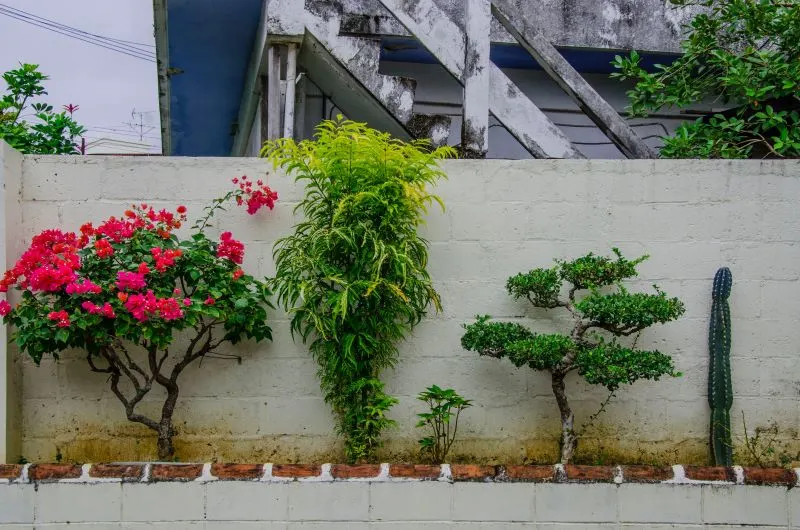
The Naha Otsunahiki Festival, also known as the Great Tug-of-War Festival, is an annual event held in Naha, the capital city of Okinawa Prefecture, Japan.
This festival is a part of Okinawa’s rich cultural heritage and is known for its massive tug-of-war rope and the spirited participation of the community.
The Naha Otsunahiki Festival typically takes place in October and is one of the largest tug-of-war events in the world.
The centerpiece of the festival is a gigantic rope, often made from natural materials like straw, that stretches through the city’s streets. The rope is so massive that it requires thousands of participants to pull on each side.
The festival is rooted in local traditions and is believed to bring good luck, prosperity, and harmony to the participants and the community as a whole.
It’s an event that showcases the unity and teamwork of the Okinawan people while also celebrating their unique cultural identity.
The Naha Otsunahiki Festival is more than just a tug-of-war; it’s a festive occasion that includes parades, music performances, food stalls, and various forms of entertainment.
The event attracts both locals and visitors who come to witness this impressive display of strength and camaraderie.
23. Shintoshin Park: Enjoy a leisurely stroll and admire the cherry blossoms during the spring season
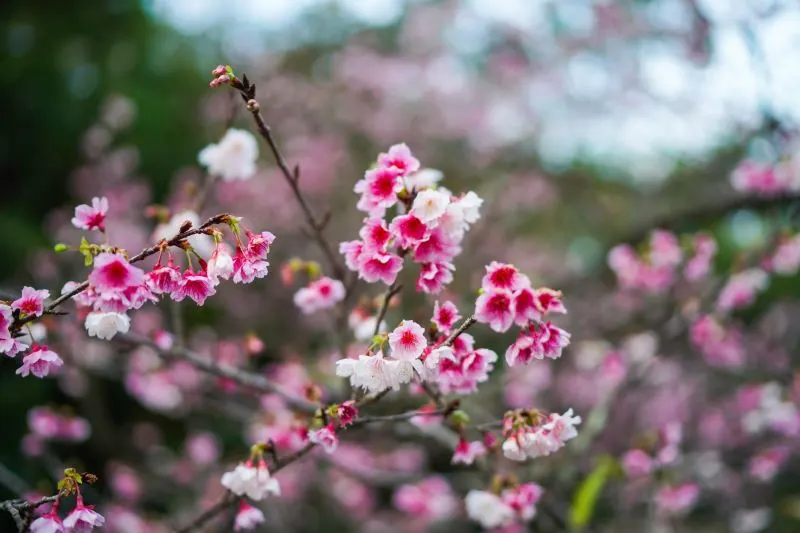
Shintoshin Park is a public park located in Naha, the capital city of Okinawa Prefecture, Japan. Shintoshin, which means “new heart” in Japanese, is a bustling commercial and entertainment district in Naha, and the park serves as a recreational space for residents and visitors in this area.
Shintoshin Park offers a green oasis in the midst of the urban landscape, providing a place for relaxation, leisure activities, and community gatherings.
The park is often designed with pathways, grassy areas, and seating spots, making it a popular spot for people to unwind, have picnics, or engage in outdoor activities.
One notable feature of Shintoshin Park is its proximity to various entertainment and commercial facilities.
Depending on the specific year and developments, it might be situated near shopping centers, restaurants, movie theaters, and other entertainment options. This makes it convenient for park-goers to enjoy a range of activities and attractions in the surrounding area.
24. Hija River: Take a relaxing boat cruise along this river surrounded by lush vegetation
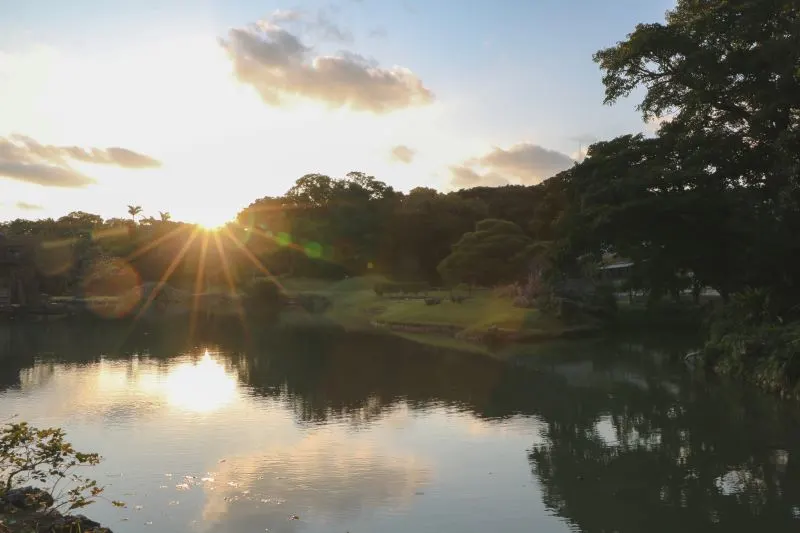
Hija River (Hija-gawa) is a river located in Naha, the capital city of Okinawa Prefecture, Japan. The river flows through the urban landscape of Naha and is a notable geographical feature in the city.
Hija River plays a significant role in the local landscape, contributing to the natural environment of Naha and providing a sense of tranquility amidst the bustling urban surroundings.
The riverbanks are often lined with greenery, creating a peaceful atmosphere for both residents and visitors to enjoy.
In addition to its aesthetic value, Hija River also serves practical purposes.
It has historically been used for irrigation and water supply, contributing to the agricultural activities of the area. Moreover, the river’s presence has influenced the development of the city and its infrastructure.
25. Sefa Utaki: Journey to this sacred site that holds spiritual significance in the Ryukyuan religion
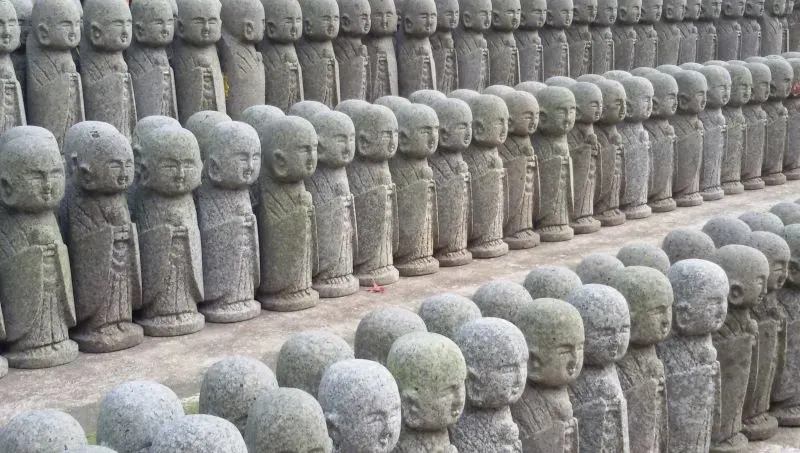
Sefa Utaki is a sacred and historical site located in Nanjo City, which is near Naha, the capital city of Okinawa Prefecture, Japan. Sefa Utaki holds deep spiritual significance in the traditional Ryukyuan religion and is considered one of the most important sacred places in Okinawa.
“Sefa Utaki” means “purified place of Utaki” in the Okinawan language. Utaki are sacred places in Ryukyuan culture where rituals and ceremonies were conducted to connect with the spiritual realm and pay homage to deities.
Sefa Utaki was often used for important ceremonies related to agricultural fertility, prayers for prosperity, and other religious practices.
The site is a collection of natural limestone formations and caves surrounded by lush vegetation, creating a serene and tranquil atmosphere.
It is composed of several different areas, each with its own significance, such as the highest point known as “Ibii,” which is believed to be the closest point to the heavens.
Visitors to Sefa Utaki can explore the various paths, stairways, and stone formations while learning about the historical and cultural importance of the site. The tranquility of the surroundings and the spiritual ambiance make it a place of reflection and reverence.
Remember that the availability of attractions and events might vary, so it’s a good idea to check the current status and opening hours before your visit. Enjoy your time exploring Naha, Okinawa!
Food In Naha
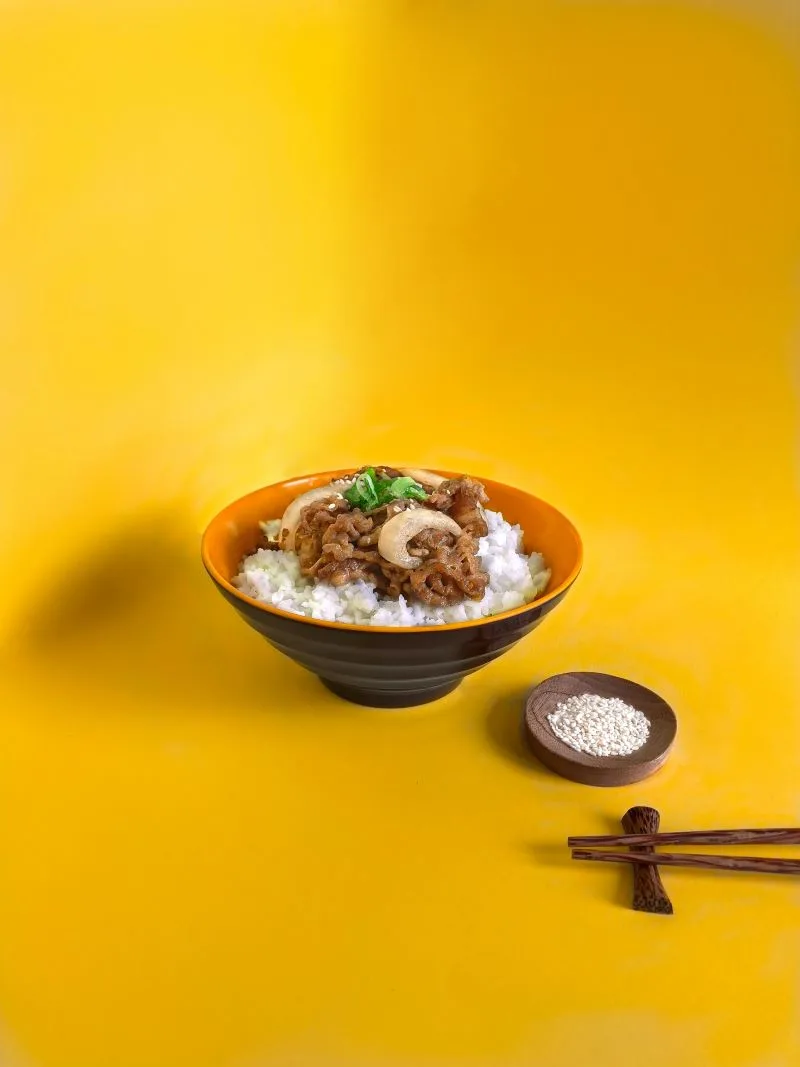
Exploring Culinary Delights in Naha, Okinawa: A Journey Through Flavors
Naha, the vibrant capital city of Okinawa Prefecture in Japan, is a treasure trove of culinary delights that reflect the rich cultural heritage and unique flavors of the region. From mouthwatering traditional dishes to modern fusion creations, Naha offers a culinary journey that is both satisfying and enlightening for food enthusiasts. Let’s take a closer look at some of the delectable offerings that await you in this coastal city.
1. Okinawan Soba: A Bowl of Tradition and Taste
One of the most iconic dishes of Okinawa is Okinawan soba. While it shares its name with the familiar Japanese buckwheat noodles, Okinawan soba is distinct in its preparation and ingredients. Made from wheat flour, these slightly thicker noodles are served in a flavorful broth that often features a combination of pork, bonito, and kelp. The toppings vary but typically include tender slices of simmered pork, green onions, and pickled ginger. Don’t miss the chance to savor this heartwarming comfort food that has been passed down through generations.
2. Goya Champuru: Embrace the Bitter and the Sweet
For a taste of local flavors, try Goya Champuru. This stir-fried dish combines bitter melon (goya) with tofu, pork, and sometimes eggs. The bitterness of the melon is balanced by the other ingredients, creating a harmonious blend of flavors that showcases Okinawan ingenuity in transforming humble ingredients into a satisfying dish.
3. Rafute: Melt-in-Your-Mouth Pork Belly
Rafute is a dish that will leave an indelible mark on your palate. Slow-cooked pork belly is braised in a mixture of soy sauce, sugar, and Okinawan black sugar until it becomes tender and succulent. The result is a melt-in-your-mouth experience that captures the essence of indulgence. Often served with a side of rice and pickled vegetables, Rafute is a must-try for those seeking an unforgettable taste of Okinawan cuisine.
4. Taco Rice: A Flavorful Fusion
Okinawa’s multicultural history is reflected in dishes like Taco Rice. A creative fusion of Tex-Mex and Japanese flavors, Taco Rice features seasoned ground meat, lettuce, tomato, cheese, and salsa piled on a bed of rice. This dish exemplifies the diverse culinary influences that have shaped Okinawan cuisine over the years.
5. Agu Pork: A Taste of Premium Okinawan Pork
Agu pork is a local breed of pig known for its rich marbling and tender texture. This premium pork is showcased in various dishes throughout Naha, from traditional pork dishes to modern interpretations. Whether you’re enjoying Agu pork shabu-shabu, Agu pork cutlets, or Agu pork skewers, you’ll undoubtedly appreciate the exceptional quality and flavor of this regional delicacy.
6. Tropical Fruits and Sweets
Okinawa’s subtropical climate lends itself to an abundance of delectable fruits. Savor the sweetness of pineapples, mangos, and passion fruits in a variety of forms, from fresh fruit platters to fruit-flavored desserts and beverages. Don’t forget to try the refreshing Shikwasa citrus fruit, which is often used to make tangy juices and sherbets.
7. Traditional Sweets: Imo Tart and Chinsuko
Complete your culinary exploration with traditional Okinawan sweets. Imo Tart is a sweet potato-based tart that highlights the natural sweetness and creamy texture of Okinawan purple sweet potatoes.
Chinsuko, on the other hand, are subtly sweet and crumbly traditional Okinawan cookies that make for the perfect souvenir or snack.
Naha’s culinary landscape is a reflection of its rich history, unique culture, and natural bounty. From the soul-nourishing comfort of Okinawan soba to the innovative twists of modern fusion cuisine, Naha offers a palate-pleasing adventure that will leave you with memories of flavors that linger long after your visit.
So, set your taste buds on a journey of discovery and immerse yourself in the culinary wonders that Naha, Okinawa has to offer.
Top 20 Best Restaurants In Naha, Okinawa
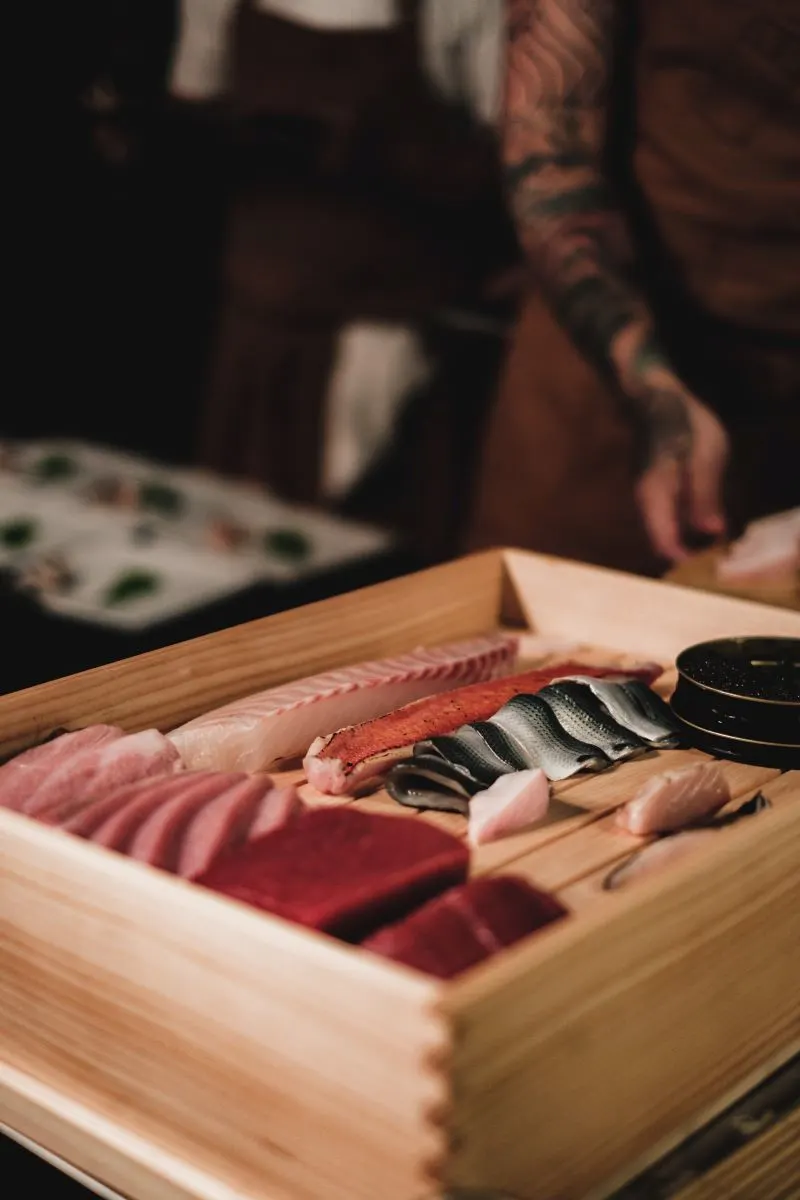
- Tsuboya Yachimun Street: While not a single restaurant, Tsuboya Yachimun Street in Naha is known for its traditional Okinawan pottery shops and eateries that serve local cuisine.
- Makishi Public Market: This bustling market offers a variety of fresh seafood and local produce, making it a great place to sample Okinawan flavors.
- Ryukyu Dining Matsuo: A restaurant that offers a variety of Okinawan dishes, including Okinawan soba, goya champuru, and more.
- Okinawa Manzamo: Known for its flavorful Okinawan-style pork dishes, including Rafute and Tebichi.
- Nakayukui Market: Another vibrant market where you can sample Okinawan cuisine and street food.
- Nakamoto Soba: A popular spot for traditional Okinawan soba noodles.
- Blue Seal Ice Cream: A local ice cream chain known for its unique flavors inspired by Okinawan ingredients.
- Hama Sushi: Offers a variety of sushi and sashimi, including locally caught seafood.
- A&W Naha Main Place: A branch of the famous American fast-food chain offering classic burgers and root beer floats.
- Kinjo-cho Stone-Paved Path Area: Explore local shops and cafes along this historic stone-paved path in Naha.
- Tenkaippin Naha: A ramen restaurant that serves rich and flavorful tonkotsu (pork bone) ramen.
- Umikaji Terrace: A waterfront complex with various dining options offering a mix of local and international cuisines.
- Banana House: A cafe known for its delicious pancakes and tropical-themed desserts.
- Ichibankan: A local izakaya (Japanese-style pub) where you can enjoy a variety of small dishes and drinks.
- Umanchu Market: A lively market offering fresh seafood and local specialties.
- Fisherman’s Wharf: A waterfront area with multiple dining options, including seafood restaurants.
- E&S Burger: A popular burger joint offering a variety of creative burger combinations.
- Ta-imo: A cozy restaurant known for its imo (sweet potato) dishes, both sweet and savory.
- Naha Central Market: An indoor market with stalls offering a range of Okinawan products, including food and crafts.
- Goya Taco Rice: A restaurant specializing in taco rice, a fusion dish combining Tex-Mex flavors with Okinawan rice.
Transportation In Naha
1. Monorail (Yui Rail): Naha’s monorail system, known as the Yui Rail, is a convenient and popular mode of transportation.
It runs from Naha Airport to Shuri Castle, connecting key areas of the city along its route. The Yui Rail provides easy access to major attractions, shopping areas, and business districts.
2. Buses: Public buses operate throughout Naha and provide access to areas not covered by the monorail. Bus routes connect various neighborhoods, tourist spots, and suburban areas. Different bus lines offer different services, including standard city buses and express buses.
3. Taxis: Taxis are readily available in Naha and offer a more personalized and direct mode of transportation. Taxi services are generally considered safe and reliable.
4. Rental Cars and Scooters: Renting a car or scooter can be a convenient option for exploring Naha and the wider Okinawa region, especially if you plan to visit areas outside the city.
Keep in mind that driving in Naha may be different from what you’re used to, as traffic rules and road signs might vary.
5. Walking and Cycling: Naha is relatively compact, making it suitable for walking and cycling, especially in areas with pedestrian-friendly pathways and bike lanes. Many tourist attractions and shopping districts are within walking distance of each other.
6. Ferries: While not within Naha itself, there are ferry services connecting Okinawa’s main island to nearby islands, offering an opportunity for island hopping and exploring more of the region.
7. Car Sharing and Ride-Hailing: Some car-sharing services and ride-hailing platforms operate in Naha, providing additional options for getting around the city.
In conclusion, Naha, Okinawa, offers an enchanting blend of historical richness, cultural vibrancy, and natural beauty that captivates every traveler who sets foot in this captivating city.
From exploring ancient castles that echo with the whispers of the past to indulging in the unique flavors of Okinawan cuisine, Naha invites you to embark on a journey of discovery and immersion into its diverse offerings.
As you wander through the vibrant streets of Kokusai Street, immerse yourself in the local markets, and experience the serenity of Shikina-en Garden, you’ll witness the city’s dynamic fusion of tradition and modernity.
The Ryukyu culture comes to life in the echoes of traditional performances, the intricate architecture, and the warm hospitality of its people.
For those seeking relaxation, the azure waters and sun-kissed beaches provide a haven of tranquility, while adventurers can set their sights on snorkeling, diving, and island-hopping excursions to uncover the hidden gems of the surrounding seas.
Whether you’re exploring the historical significance of Shuri Castle, indulging in the flavors of Okinawan soba and Goya Champuru, or simply gazing at the stunning sunset over the East China Sea, Naha leaves an indelible mark on your heart.
With its unique blend of culture, cuisine, and captivating landscapes, Naha, Okinawa, invites you to discover its 25 best things to do and create unforgettable memories that will resonate with you long after your journey has come to an end.

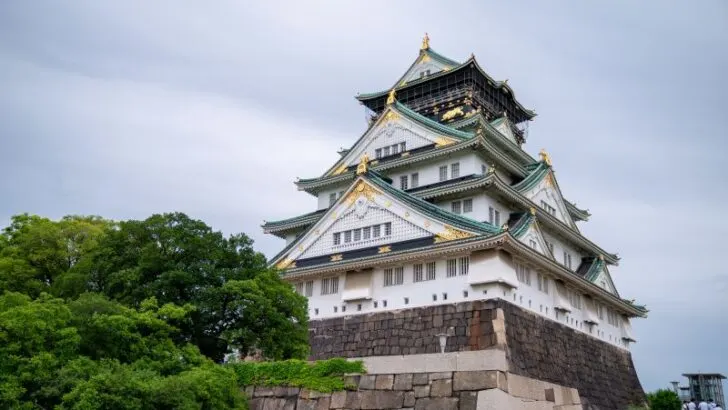
Leave a comment